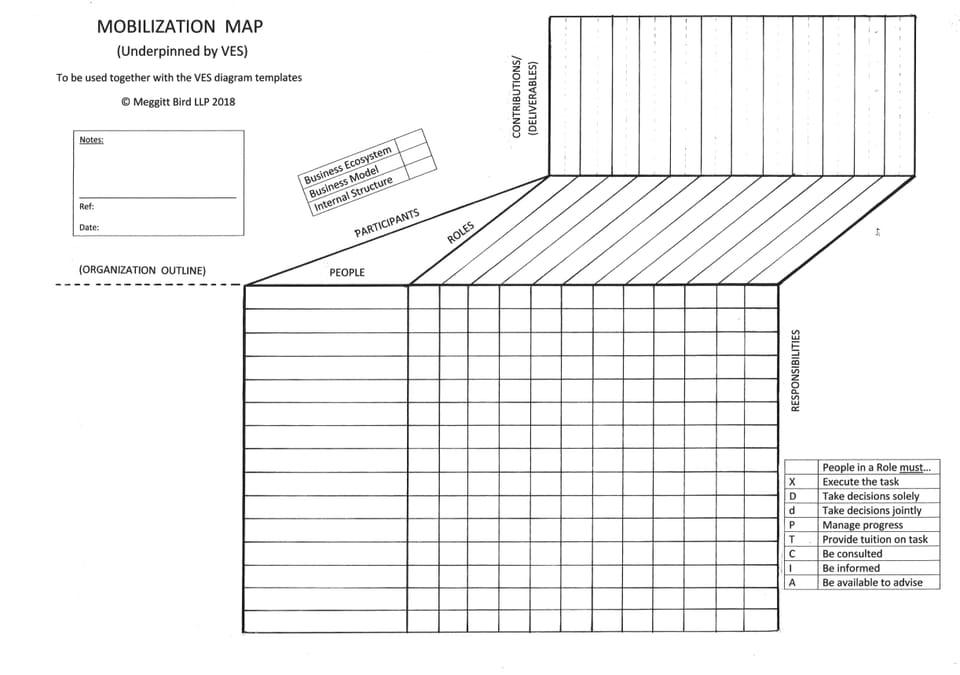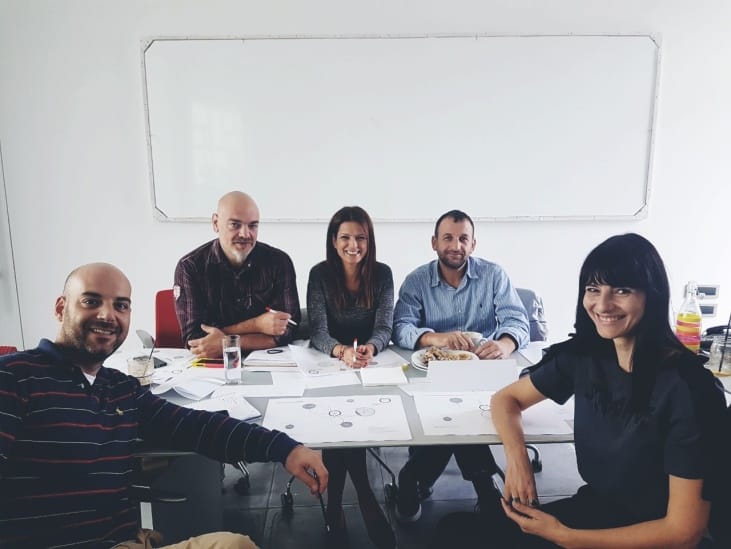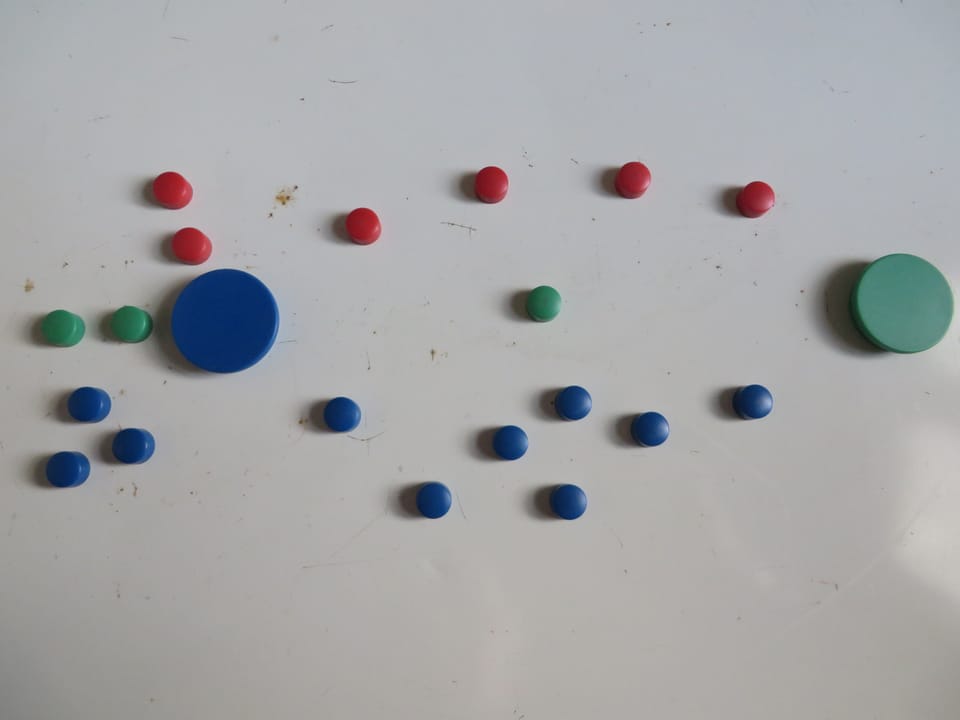Probing the robustness of human interactions (H5) 3)

The robustness of human interactions is crucial for organizational success as it fosters effective communication, collaboration, and problem-solving among its members. This cohesion enhances productivity, innovation, and overall performance, leading to more resilient and successful outcomes.
However, we have a problem. Since the beginning of human existence, there has been a tension between the "elite's" desire to control their people and the desire of the "people" to control themselves. Hence, in our time, this tension manifests itself in what has been coined the Management Paradox.
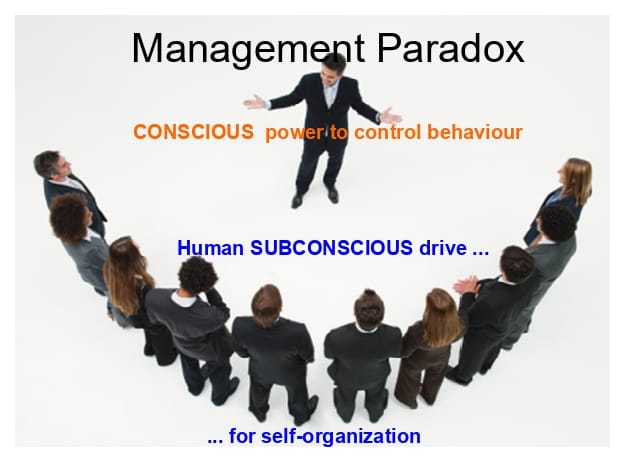
Understanding this requires a deep study of the findings from disciplines ranging from neuroscience to anthropology, all of which help explain what makes us human. These largely "invisible" features are conveniently tucked away in our subconscious minds which the theory of We Spaces succinctly reveals. [2].
However, We Space Theory (WST) comprises over 100 components, so it is convenient to isolate those which are particularly significant:-
- Conscious and unconscious components
- Their inherent hierarchy
- The "power" they exert over us
- Their relative strength
To get a feel for their interrelationships, I borrowed from ideas developed in nuclear physics in portraying the interactions between sub-atomic particles! This has proved helpful. Adapting what is known as the Standard Model of particle physics, despite its limitations, we come up with the unique diagram below after inserting WST components. Of particular significance is the yellow area described as the Social Homeostatic Self-Organizing Core, which resonates with the elusive force of gravity and encapsulates the drive to self-organize and the effects influencing that.
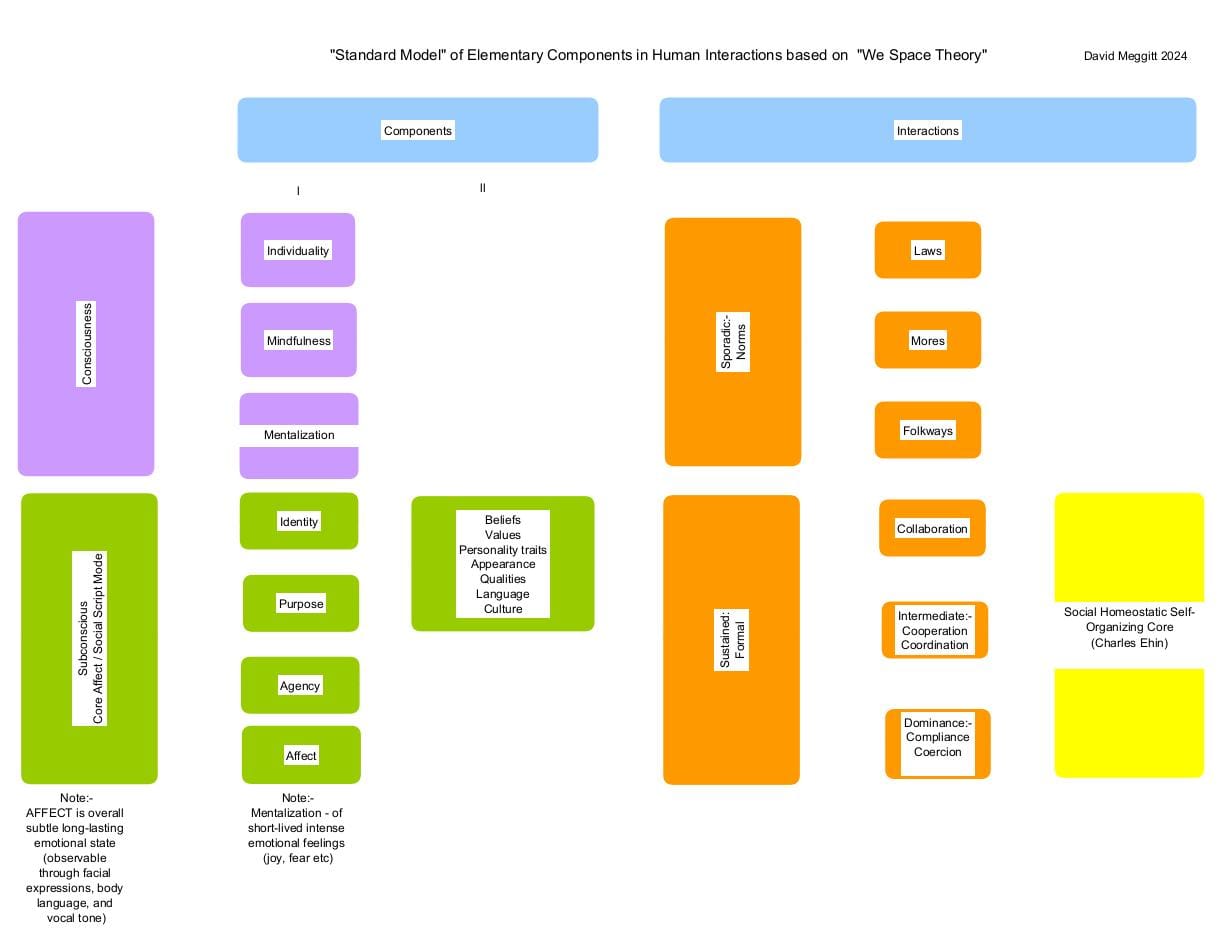
We again borrow from nuclear physics and the famous Feynman diagrams devised to describe particle interactions. Focusing on the orange "strong interactions" above, it is possible to conceive that dominant behavourial interactions can be damaging. The following diagram vividly shows that Participant 1 is adversely affected by their interaction with P2's coercive behaviour who sallies off without knowing or caring about the subconscious effects (feelings and emotions) triggered in P1.
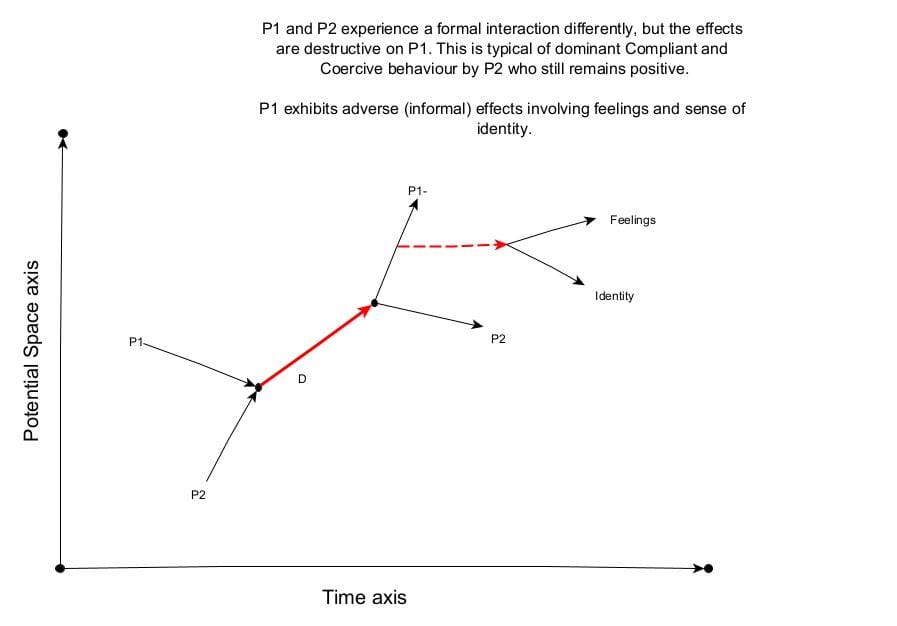
Self-organization
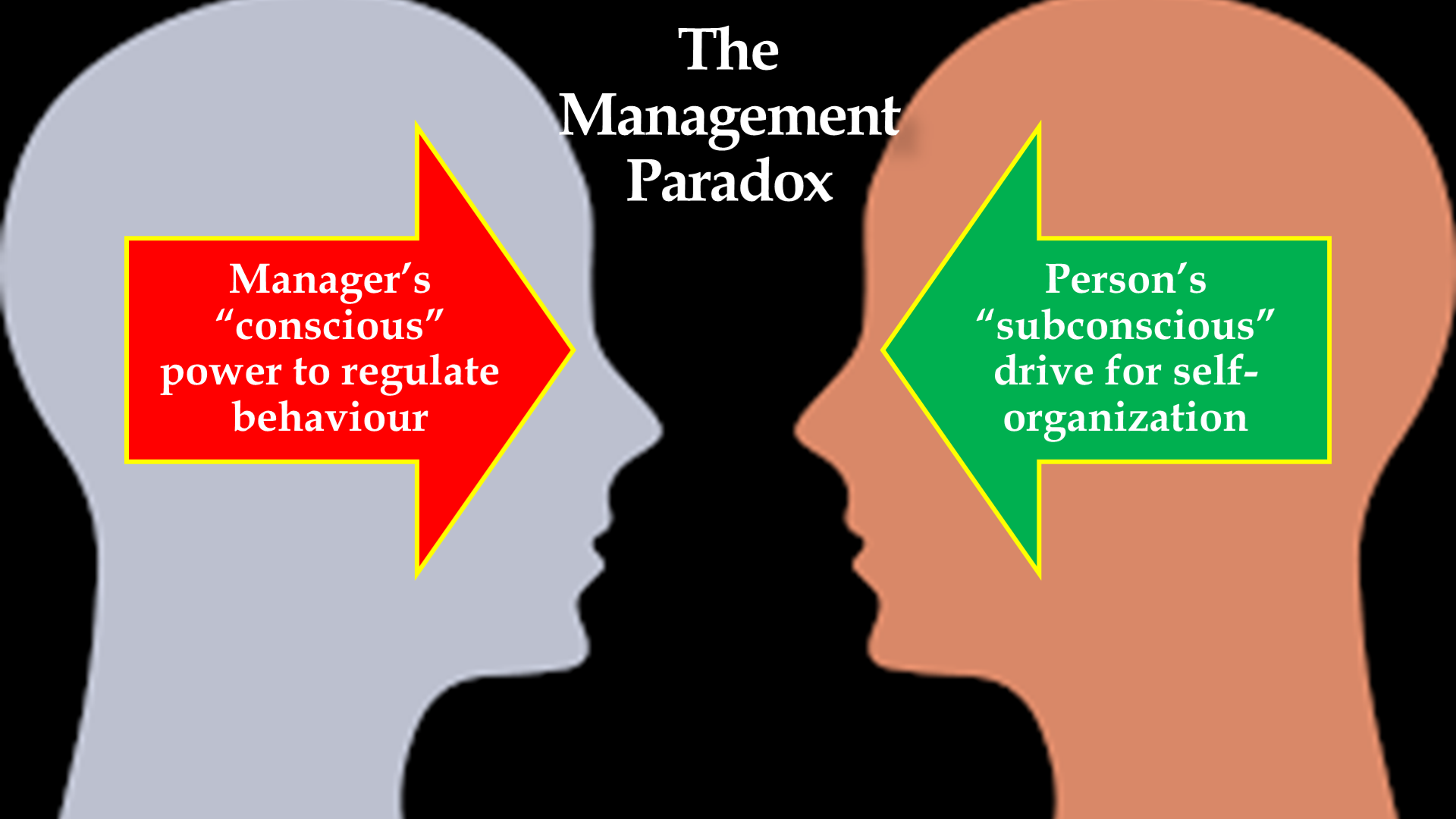
Self-organization involves maintaining social balance, which goes beyond individual boundaries. We naturally strive to uphold our identities, autonomy, and goals in any social context while also deciphering others' intentions. Emotions often take precedence, before logic and experience kick in. While these social dynamics can be influenced, they remain beyond others' control or management. The maintenance of this stable state is termed social homeostasis.
Further, the social core affect is an aspect of subjective emotional experience. It is a neurophysiological state consciously accessible as simply feeling good or bad, energized or quiescent:-
• “Internal feelings” provide efficient ways to ensure human behavioural adaptation to environment.
• Emotions direct our attention, motivate our behaviour, and choose the significance of what is going on around us. [3]
Hence the concept of We Spaces. “We Spaces” are “emergent” (self-organizing)
mutually rewarding and threat-avoiding safe zones formed by 2 to 15 people. They allow members to interact with each other, without bias and unwarranted expectations, with exchange of mutually beneficial value. Supportive relationships (trust and collaboration) rule the day [2]. The level of interaction (We Space levels) between individuals evolves in conjunction with a shared identity with discrete levels emerging as follows.
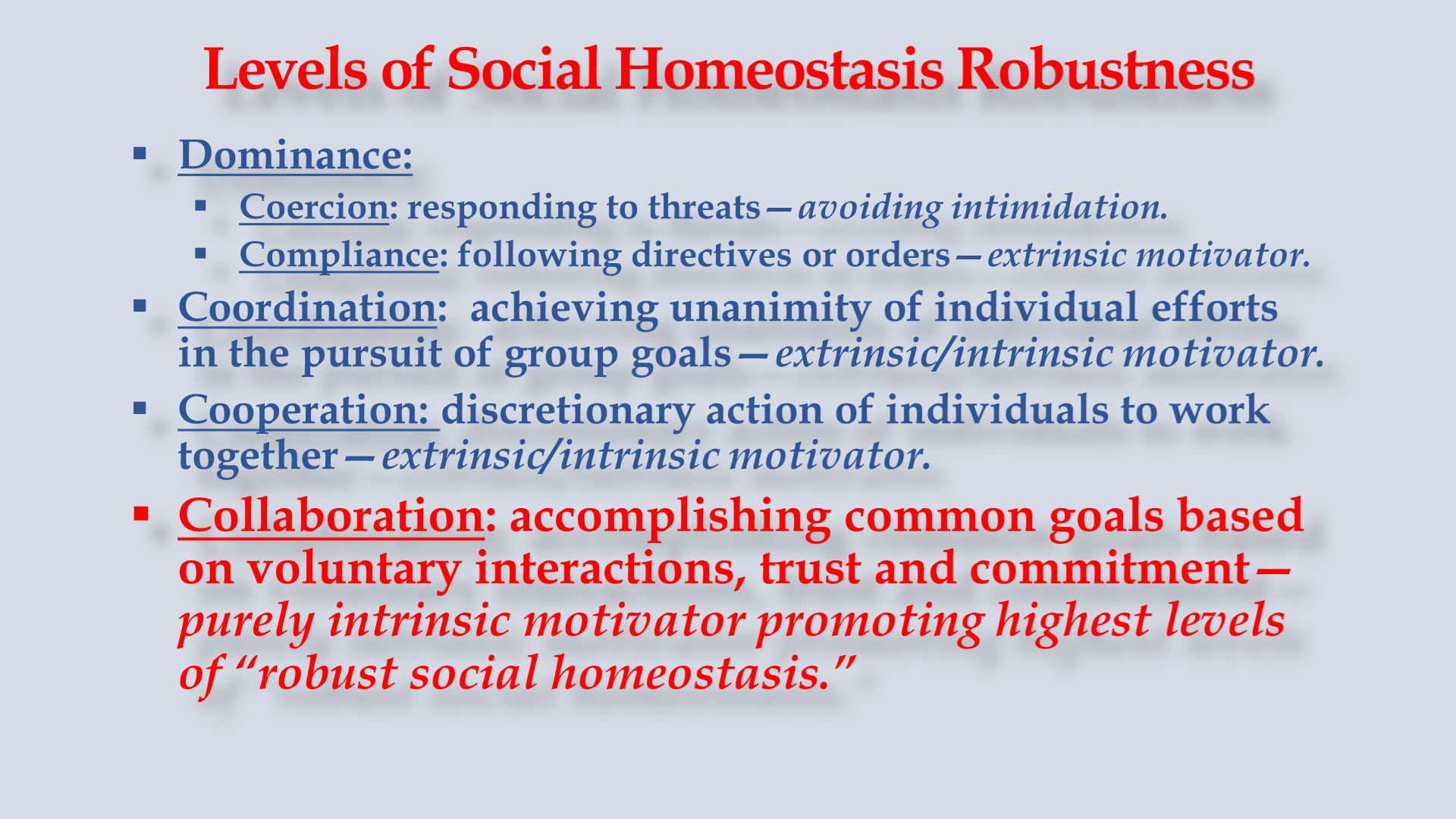
The position on the spectrum of compliance-to-collaboration not only affects an individual. The impact on the performance of an organization is also profound: the impact on the perceived value of deliverables and the cost of the associated value transactions is represented below.
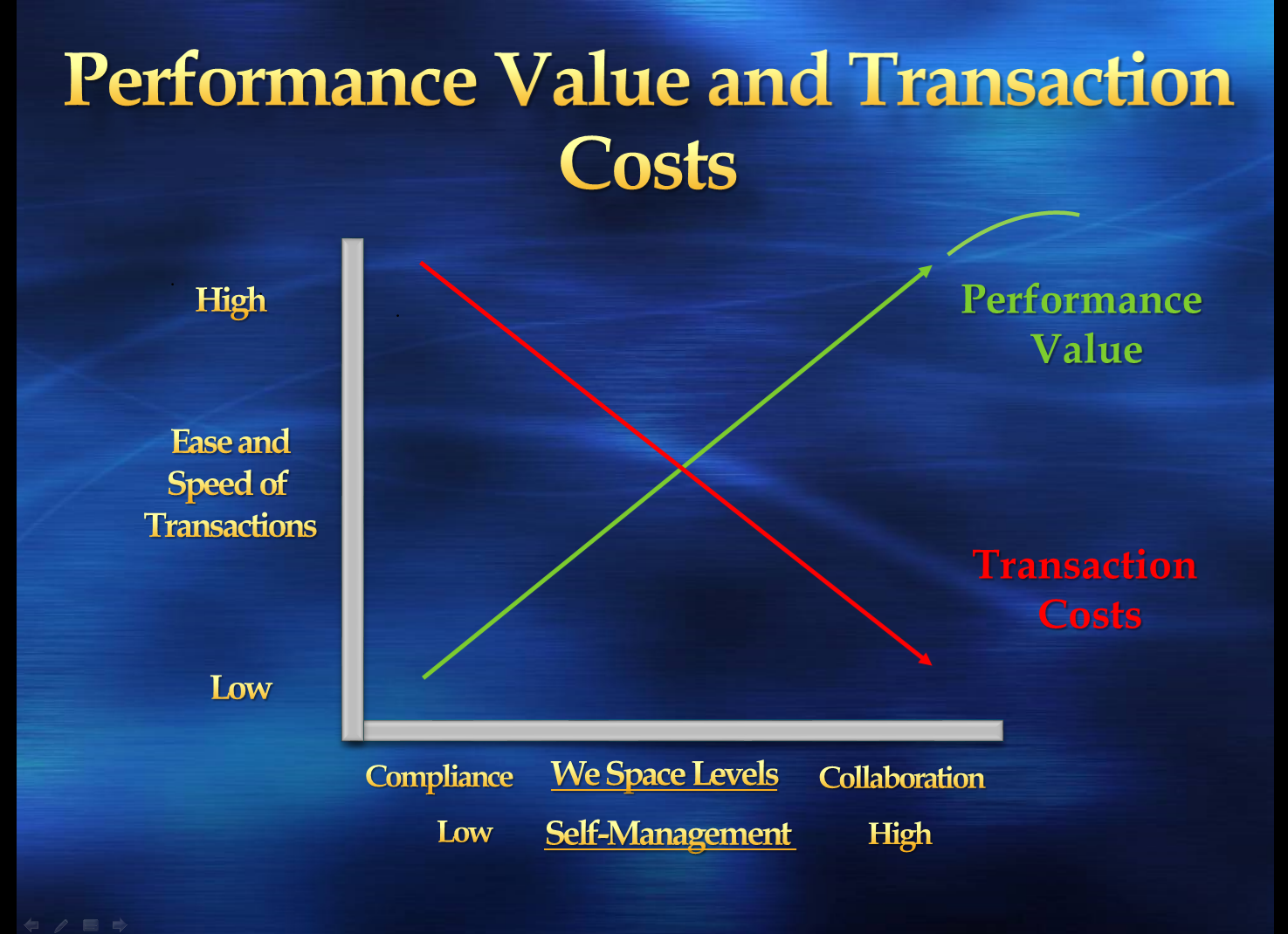
The following diagram depicts the contrast between the potentially corrosive effect of compliance behaviour (shown red) and the benefits of cultivating We Spaces or their equivalent (shown green.)
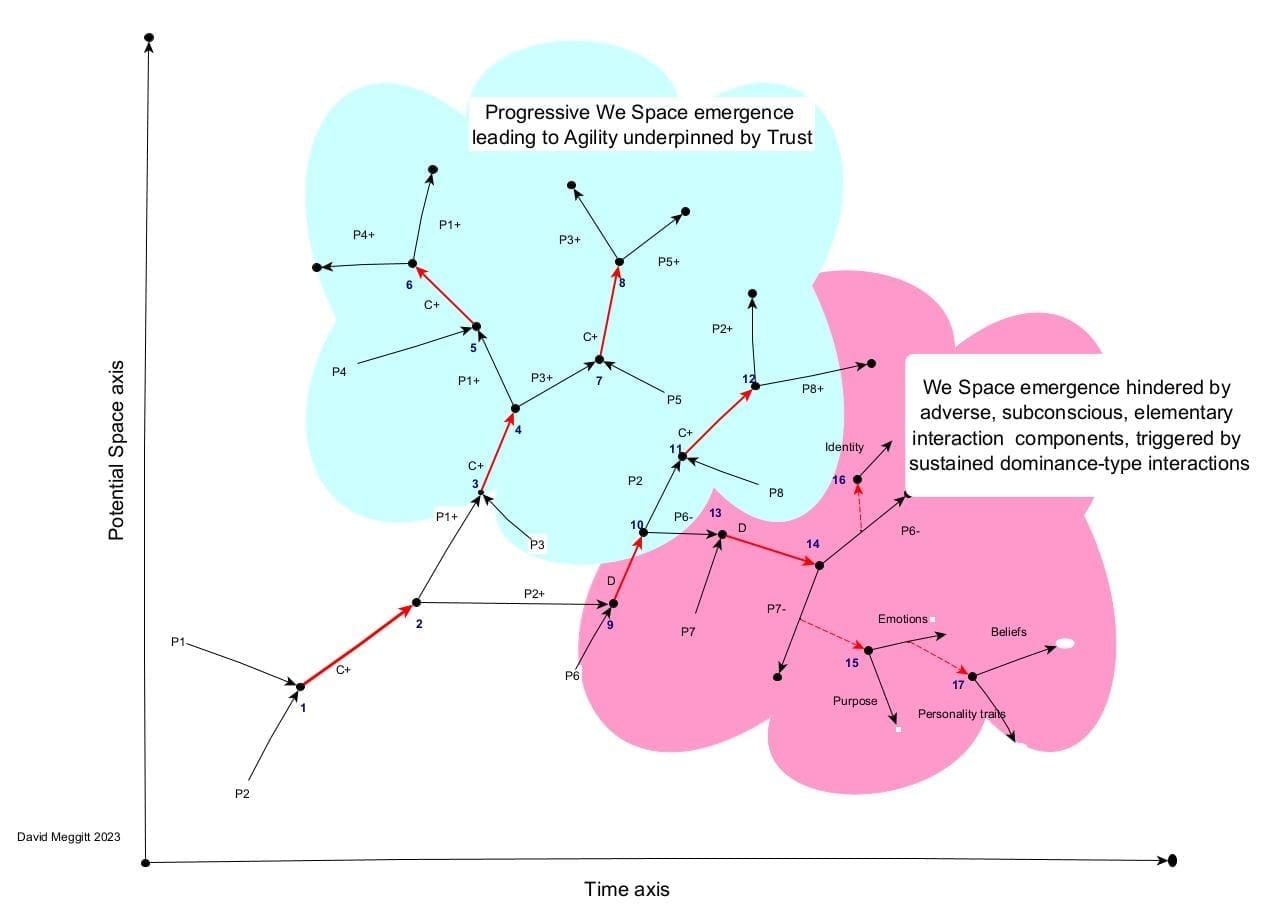
As the robustness of the Social Core increases, the inherent benefits listed on the two axes of the diagram below become apparent, and the role of We Spaces emerges.
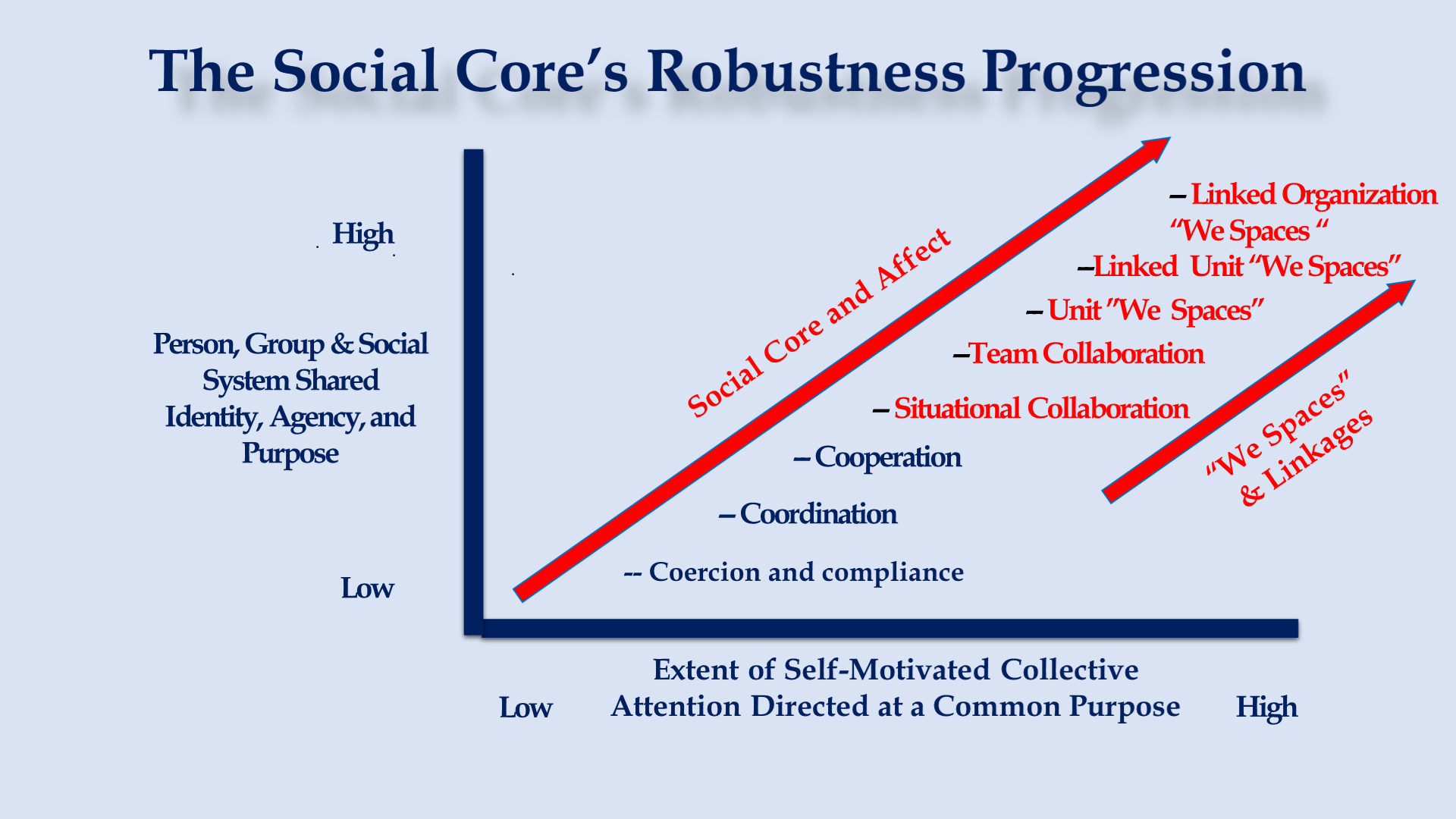
Integrating We Space interactions with formal process and informal networks
Apply the VES vocabulary (a constructed language) to highlight interactions between Participants who exhibit We Space characteristics by elevating them to a separate colour from the standard value exchange components. Apply to interactions, whether formal processes or informal networks, and Participants.
This language can be used to reveal whether an organization displays resilience or even agility. See here.
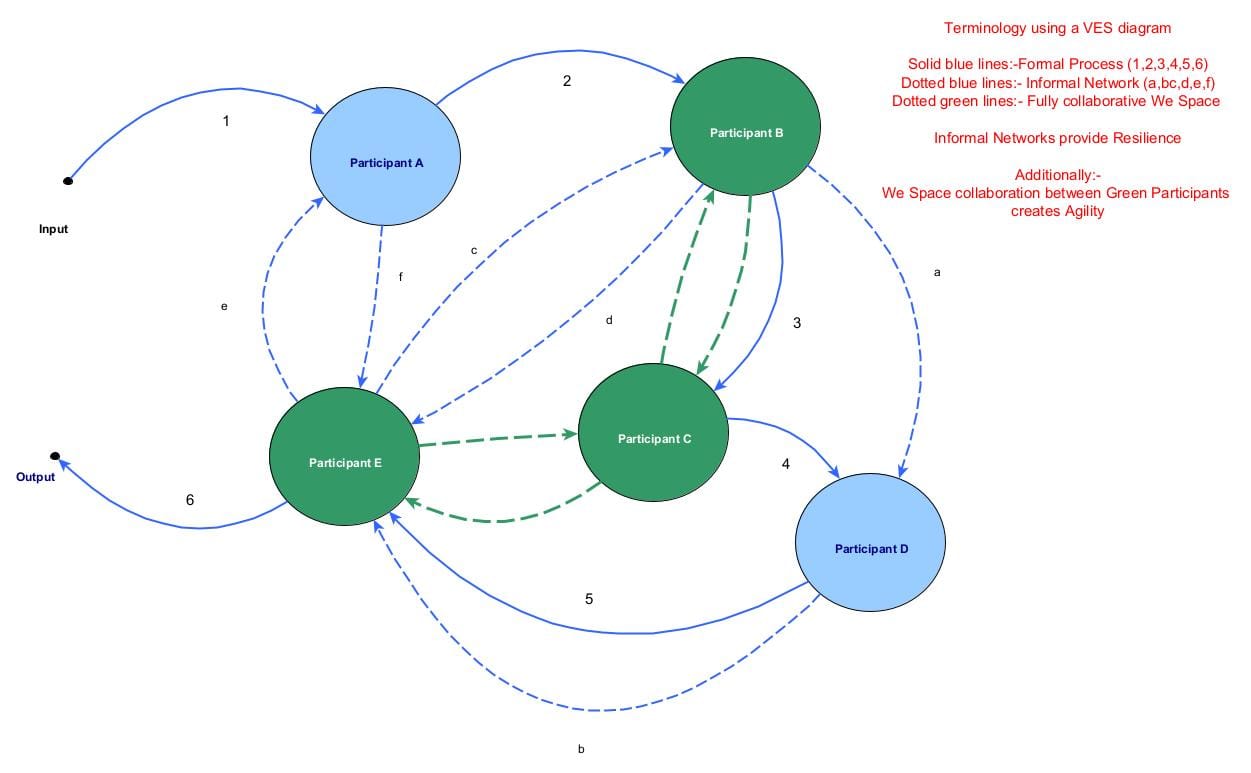
Compliance
The focus so far has been on behaviour and the detrimental effect of "compliance" interactions on performance.
However, there is a tangible need to incorporate compliance into formal processes such as reporting, auditing, and testing, and to automatically record these to help streamline operations and provide input to ESG reporting.
Unfortunately, the accountancy profession may tend to overreach and restrict human initiative where it's crucial. Therefore, a Note on this topic will follow, aiming to meet the demands for a new type of "super auditor" and application of VES.
Patterns of Personal Participation (PPP) - draft
An interim portrayal of the connection between salient PPP components is shown below. Those coloured brown are underpinned by different aspects of We Space Theory. (See [2] below.)
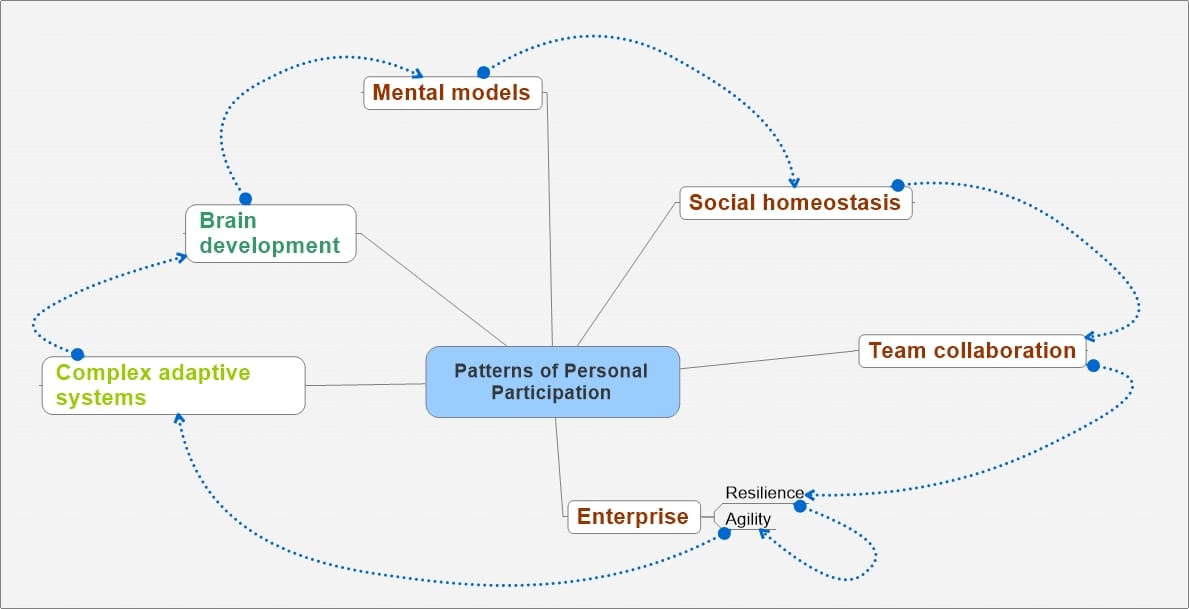
Refs:
[1] Image created via Cyberlink video platform
[2] I am grateful for the extensive collaboration with Charles (Kalev) Ehin (an Emeritus Professor of Management and former Dean of the Gore School of Business at Westminster College in Salt Lake City, the author of several books on management and organizational structures) for his insights, and details of his We Space Theory which underpin this Note, and his supportive friendship.
[3] J. Panske, The Archaeology of Mind, Norton Series on Interpersonal Neurobiology, 2012.
